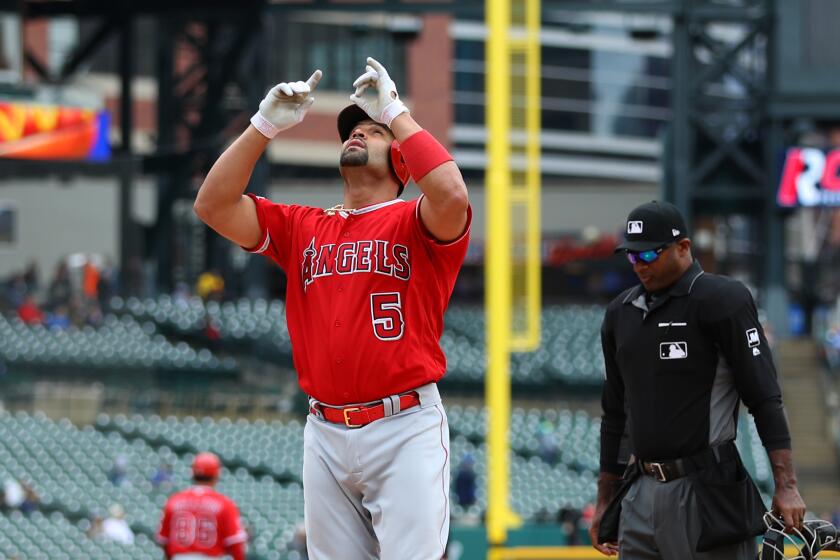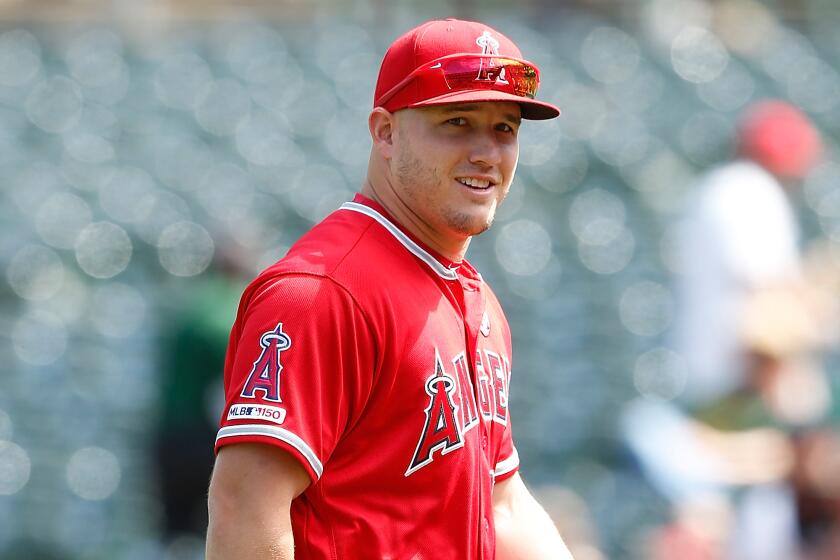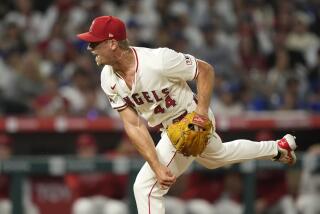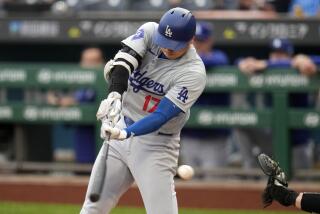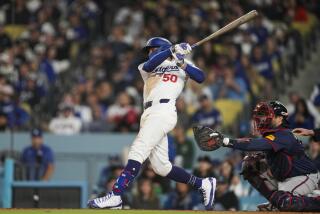Angels’ Albert Pujols hangs on as member of vanishing breed: .300 career hitters
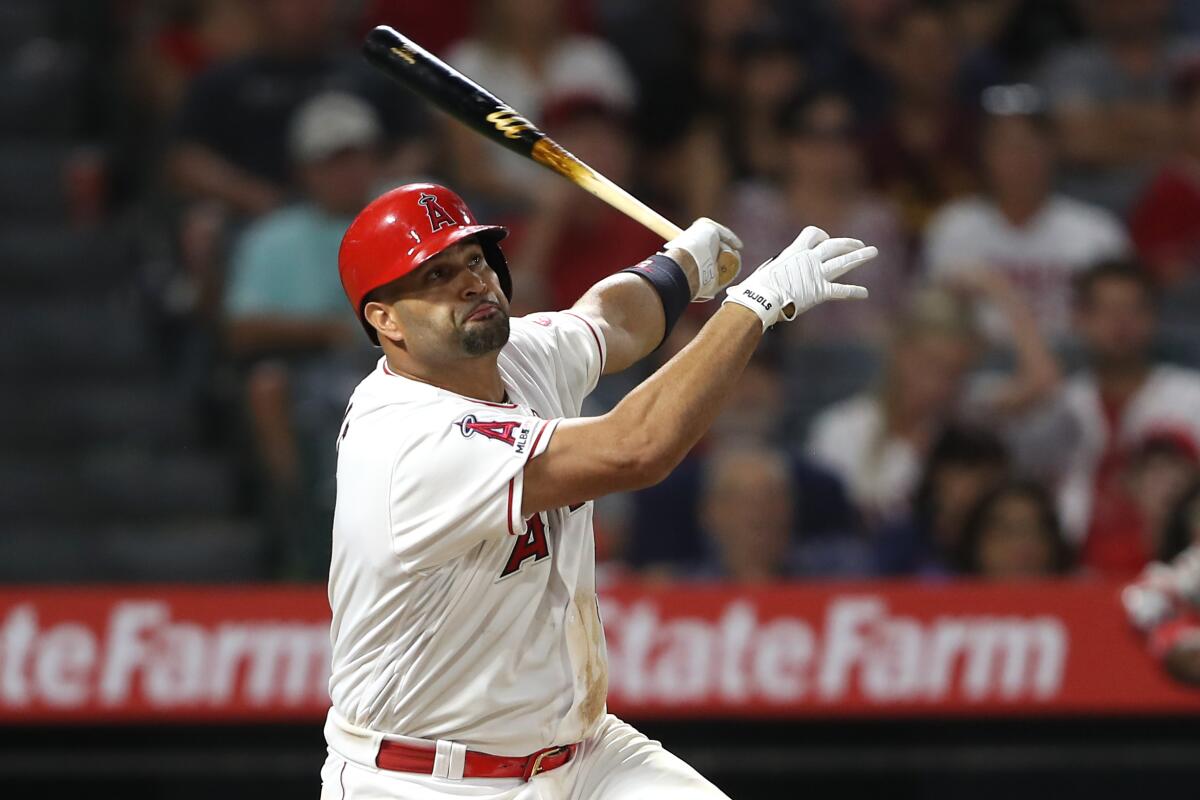
Albert Pujols was a hot-hitting and well-meaning St. Louis Cardinals rookie in late April 2001 when he approached his manager with a question that seemed preposterous at the time.
Pujols, then 21, was hitting .379 with eight homers and 26 RBIs in 23 games. Cardinals cleanup man Mark McGwire had missed two weeks because of a knee injury, and there was no timetable for the slugger’s return.
Pujols had moved from the sixth spot to cleanup in McGwire’s absence and wondered if he should change his approach to match his new lineup position.
“He came in and said, ‘Without Mark, I’ve got to hit for more power, right?’ ” former St. Louis manager Tony La Russa recalled. “And I said, ‘No, you don’t change your swing. You’re hitting well over .300. Guys like you, the higher your batting average, the more productive you are.
“And I’ll guarantee you, if you keep hitting .300 or better, you’re going to end up hitting more home runs. But if you start trying to hook the ball and pull it for extra homers, your batting average will go down and your productivity will go down.’ And he ends up hitting .329 with 37 homers and 130 RBIs.”
That advice from a Hall-of-Fame manager stuck with Pujols for two decades, fueling a 19-year Hall-of-Fame-worthy career in which Pujols, now 39, has displayed the power to rank sixth on baseball’s all-time list with 656 home runs, fifth with 2,075 RBIs and seventh with 661 doubles.
But as players around him adopt more of an all-or-nothing approach, stressing slugging and on-base percentage over batting average, Pujols has resisted the temptation to change his launch angle in an effort to hit more homers.
As a result, Pujols is something of a vanishing breed of hitter, a slugger who has maintained a career average of .300 or better and has never struck out more than 93 times in a season.
The fan who’d refused to give up Albert Pujols’ 2,000th RBI ball in May finally decided to donate it to the Hall of Fame Museum in the name of his deceased son.
Pujols pushed his average above .300 in his fifth big-league game in 2001 and hit .328 in 11 years with the Cardinals. That mark fell by three to five points in each of his eight years with the Angels and dipped a fraction under .300 for the first time in a Sept. 18 game against the Yankees. But it still rounds up to .300.
“I would never change my swing,” Pujols said. “Launch angle? I don’t believe in it. But you know what, man? If it’s been successful for some guys, I’m not going to judge somebody who wants to teach that. This game is about making adjustments, and there are guys who have tried the launch angle, and it’s helped.
“I’ve always believed you need to stay inside the baseball and through the baseball and not get under it and lift it. When you try to hit homers, you always get too big with your swing and make a lot of outs. But if you focus on putting the ball in play and getting hits, there will be more opportunities to drive in 100 runs.”
The dramatic difference in Pujols’ numbers in 11 seasons with the Cardinals and his eight seasons with the Angels is a concession to age, not approach. With St. Louis, he batted .328 with 445 home runs; with the Angels, he’s hit .258 with 211 homers.
Several forces in today’s game fly in the face of Pujols’ approach. Baseballs are traveling farther than ever — the major league record for homers fell Sept. 11, and players had hit 6,647 entering the final weekend of the season.
Armed with more analytical data and detailed scouting reports than they’ve ever had before, pitchers have advance knowledge of how to attack every batter’s weakness.
And the defensive shifts teams have employed more frequently the last four years have made it even tougher, especially for left-handed power hitters, to keep their averages up.
“There’s no really salvaging a day anymore,” Angels outfielder Kole Calhoun said. “It used to be, you’d be 0 for 3 and you could sneak one in the hole. There aren’t really any more holes, you know?
“And it’s a lot harder to hit the ball on the ground the other way or to bunt than people think. It’s always been difficult to hit .300 in this league, and they’ve made it even more difficult.”
The left-handed-hitting Calhoun is a prototypical slugger in today’s game. He entered the weekend with a .232 average, .794 on-base-plus-slugging percentage, 33 homers, 74 RBIs … and 157 strikeouts.
Major leaguers set a single-season strikeout record for the 12th consecutive season, with more than 42,000 whiffs and counting. Before the record run started in 2008, the mark had been 32,404 strikeouts in 2001.
“Could Kole be a higher-average hitter with 10 less homers? I guarantee you he could,” said Tim Salmon, the former Angels outfielder and current Fox Sports West broadcaster. “Is he really trying to get extended and hit a hard ground ball the hole? No, he’s trying to launch it.
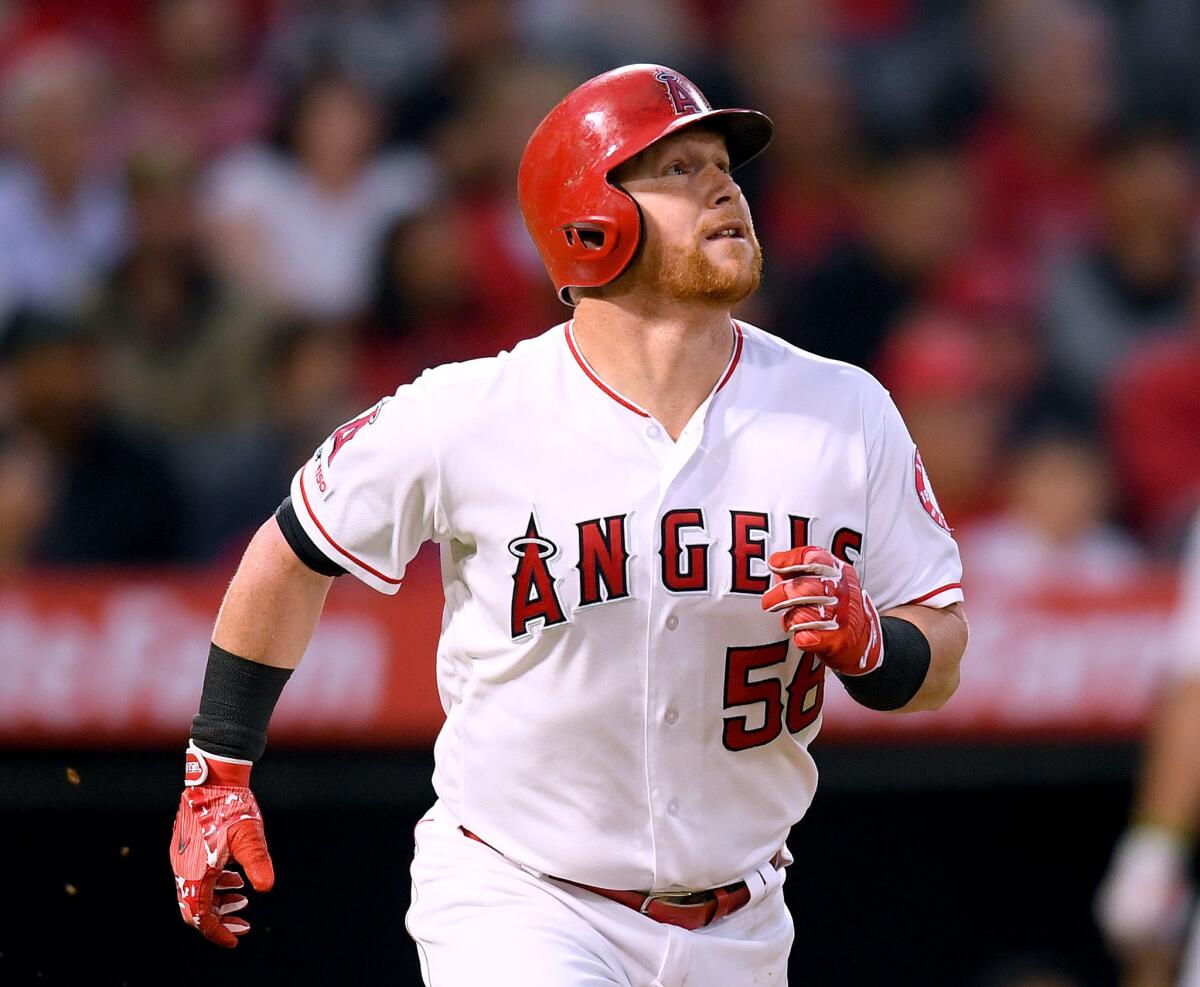
“Back in the day, if you struck out 150-200 times, you weren’t ready for the big leagues, right? Seriously, I think about [former outfielder] Rob Deer. He’d hit .220, 30 homers and strike out 150 times a year, and he wasn’t thought of as a good hitter. But you put him in today’s game, and he’s right there.
“It’s a different cultural mindset because general managers back then wouldn’t settle for guys hitting .230 with 20 homers. It was, ‘No, let’s hit 10 homers, be a .260 or .270 hitter who can hit behind the runner, go the other way, do all that other stuff and strike out less than 100 times.’ ”
Salmon hit cleanup for much of his 14-year career with the Angels and had five 30-homer seasons, but he was still “mortally concerned about my strikeout numbers,” which hovered in the 125-a-year range.
As front offices place more emphasis on OPS and juiced baseballs fly out of parks at record rates, the stigma attached to strikeouts has faded.
“I don’t think it’s just the ball,” Cleveland Indians manager Terry Francona said of the spike in homers. “I think more hitters are selling out for home runs. You used to see guys choke up with two strikes. That’s probably a rarity more than the norm. Home runs are what people are looking for. That’s what gets you paid. Strikeouts used to be demoralizing. Now, they’re just part of the game.”
Francona mentioned Cincinnati Reds first baseman Joey Votto as a player who still chokes up with two strikes. Votto (.307) is one of only 11 active players with a career average of .300 or better over 500 or more games, a list headed by Detroit’s Miguel Cabrera and Houston’s Jose Altuve, both of whom are batting .315. They are tied at No. 70 among the 215 players all-time batting .300 or better.
“It’s not that guys aren’t capable of hitting .300,” said former Dodgers first baseman Eric Karros, who is now a Fox Sports analyst. “It’s just not emphasized. It’s not what is rewarded, or what is deemed valuable.”
Even middle infielders, who were once valued more for defense than slugging, have gotten in on the power play.
Before 2016, shortstops had never combined to hit more than 423 homers in a season. That total climbed to 493 homers in 2016, 534 in 2017, 571 in 2018 and 663 in 2019 entering the weekend.
“Back in the day if you had younger guys or those middle-infielder types trying to launch, you’d have a guy like [former Angels hitting coach] Rod Carew screaming down their throats, saying, ‘Hit the ball on the ground,’ ” Salmon said. “That was the mindset back then.
In his first comments since having a foot surgery, Angels slugger Mike Trout talks about his MVP chances, the loss of Tyler Skaggs and his year at the plate.
“The ball didn’t carry then like it does today, so the same balls that were routine fly-ball outs, they’re carrying out. But I’m telling you, when you’re trying to launch, it takes away your ability to maybe go the other way, to hit the off-speed or tough corner pitches. If you’re in the mindset of launching the ball, you tend to be on your back side, rotating and tilting.”
The proliferation of baseball’s “three true outcomes,” the walk, strikeout and homer, have sapped some strategy and — in the eyes of many — excitement from the game. Teams don’t hit-and-run or steal as often. The sacrifice bunt is nearly extinct, save for those dropped by National League pitchers.
“Think about the most entertaining baseball game you’d like to see — the ball’s in play and you have these amazing athletes making all these defensive plays,” said La Russa, who won one World Series title in Oakland and two in St. Louis. “You see guys get on base with hits and go first to third or hit doubles and slide into second.
“This swing-from-your-ass, trying to always go for the crooked number, that’s not entertaining. But more importantly, you’re not going to win consistently because it’s the old adage — the better the pitchers, the tougher it is to do the biggest thing. So late in the game against quality relievers, or if you play in the playoffs against quality starters, your offense disappears.”
La Russa thinks the pendulum will swing back toward a more traditional style of play, with less emphasis on homers and strikeouts and more reliance on contact, baserunning, manufacturing runs and defense.
Commissioner Rob Manfred addressed the juiced balls last week, telling Forbes “we need to see if we can make some changes that give us a more predictable, consistent performance from the baseball.”
Pujols, who has two years left on his 10-year contract, would welcome a change.
“It’s just a different era in the game, and I’m pretty sure in five or six years, it’s going to be something else,” Pujols said. “Right now, everyone is waiting for that three-run homer and going with offense.
“Sometimes I miss the small-ball game, the bunt, the moving-the-guy-over, the hit-and-run, playing the game, not necessarily the right way, but the way I came up playing it.”
Active career .300 hitters (minimum 500 games)
Name, Team: Average, Rank All-Time
Miguel Cabrera, Tigers: .3145, 70
Jose Altuve, Astros: .3142, 72
Joey Votto, Reds: .3069, 131
Mike Trout, Angels: .3051, 144
Charlie Blackmon, Rockies: .3043, 151
DJ LeMahieu, Yankees: .3026, 174
Robinson Cano, Mets: .3025, 176
Buster Posey, Giants: .3016, 188
Christian Yelich, Brewers: .3013, 192
Mookie Betts, Red Sox: .3010, 194
Albert Pujols, Angels: .2997, 208
More to Read
Go beyond the scoreboard
Get the latest on L.A.'s teams in the daily Sports Report newsletter.
You may occasionally receive promotional content from the Los Angeles Times.

